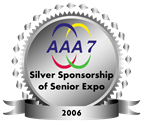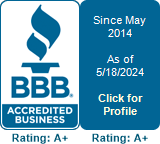For September’s continuing education credit, we wanted to remind you of the proper procedures for providing personal care for your patients.
You have been taught this already — and should be using these procedures when you have to dress or bathe your patients, but every now and then, it’s nice to have a refresher.
Also, please remember that the quiz linked at the bottom of the page is mandatory for your employment. It either needs to be completed and turned in on-line or completed and turned in at one of our offices.
Thank you!
Dressing Assistance
Encourage the patient to select the clothing if possible. Make sure it is clean and neat. As you assist, watch for signs of dizziness or unsteadiness and be sure the patie虹is properly supported.
- As you assist the patient, make sure the patient can safely perfom these dressing tasks.
- Dress and undress the upper body first.
- If the patient has a weak side because of a stroke or other disability’dress that side first.
- Put the patient’s footwear on before he or she gets out of bed.
To put on pants:
- Have the patient sit down.
- Put on underwear, socks, and pants, pulling the underwear and pants as high as the thighs.
- Put on shoes and help the patient stand up, and then pull the underwear and pants all the way up.
- If the patient cannot sit up, ask her to raise her hips off the bed while you pull the pants up.
To remove pants:
- Remove shoes and have patient lie down.
- Unfasten pants, and pull pants off while patient raises hips off bed by pushing with feet.
Bathing Assistance
When assisting a patient with a tub bath or shower, be alert to slippery floors, overly hot water, drafts, or dizziness. As you assist the patient, make sure the patient can safely perfom these bathing tasks.
Procedure for tub or shower bath:
- Assemble soap, washcloth, towel, and gloves. Clean the floor of the shower if patient is taking a shower.
- Place a rubber mat on the shower floor and a towel or mat on the tub bottom. Put a bath mat in front of the tub or shower.
- Fill tub or get shower water to a comfortable 105-110 degrees.
- Assist the patient to remove clothing and carefully enter the tub or shower.
- Let the patieut wash as much as possible, and then wash any areas the patient cannot reach.
- Assist the patient out ofthe tub or shower and assist to pat dry (pat, don’t rub) and dress.
- Clean the tub or shower.
Definition of partial baths and soaks
- Soak: Place a body part in water for a period of time — usually warm water between 105 and 110 degrees.
- Sitz: Soak the perineal area in wam water.
- Partial bath: Bathe only certain parts of the body. Patients may need you to assist only with parts they can’t reach, such as the back, Or they may prefer to wash only certain areas on some days to prevent the dry skin that can be caused by daily all-0ver bathing. Often this term refers to washing only the following areas: the face, the ampits, the perineum (private parts〉, the hands, and the feet.
Procedure for Shaving
- Patient should be sitting up if possible. Assemble razor, soap, shaving cream/lotion, towel.
- Cover the chest and neck with a towel. Have warm (105-110 degrees) water handy in a basin or sink.
- Wash the face and neck to soften the beard.
- Rub shaving cream over the beard, Or use shaving lotion for an electric razor if appropriate.
- Hold head steady with one hand and shave w血the other’uSing smooth downward strokes on the face and upward strokes on the neck and under the chin.
- Wipe clean.
If you cut a patient with a razor apply direct pressure to the cut with your gloved finger until the bleeding stops.
Hair and Nail Care Assistance
Brushing hair:
- Place patient in a sitting position.
- Cover the patient’s shoulders (and pillow, if in bed) with a towel.
- Remove glasses, hairpins’and clips.
- Brush gently in sections.
- Remove tangles without pulling or tugging.
- Style in the manner the patient requests.
Clean hair is necessary for good grooming. You may need to assist the patient in the tub or shower, or you may need to wash the hair in bed.
Washing hair:
- Water temperature must be 105-110 degrees.
- Hair should be brushed before washing.
- Give the patient a towel to cover the eyes while washing the hair.
- Wet hair thoroughly before applying shampoo. Warm the shampoo in your hands before putting it on the patient’s head.
- Massage the patient’s scalp as you lather the shampoo.
- Rinse the hair and wrap it in a towel. Dry the patient’s face.
- Comb the hair and dry it with a hair dryer or put it in rollers, styling as the patient requests.
When washing hair in bed, follow the same steps given above, with the following differences:
- Have the patient lie down without a pillow, with the head and shoulders on the side of the bed nearest you (but don’t have the patient too close to the edge of the bed).
- Use a shampoo trough under the patient’s head, with a basin on a chair next to the bed so the water flows from the trough into the basin. Remove the trough when finished.
Nail care:
Soak, clean, and shape fingernails and toenails with an emery board. Only trim nails if you have your supervisor’s permission.
Oral Care Assistance
Procedure for handling dentures:
- Handle with gauze so you have a good grip on the dentures.
- Use only cold water to wash and soak dentures. Hot water can warp them.
- Use denture cleaner to brush the dentures. Only store in the patient’s personal holder.
Procedure for brushing teeth:
Everyone should brush their teeth at the beginning and end of every day and after meals if possible. If you assist with oral care, be sure to wear gloves.
- Cover cIothing and linens with a towel.
- Use a wet toothbrush and toothpaste.
- Use a gentle horizontal back-and forth motion for brushing the inside and outside of the teeth.
- When brushing the inside of the front teeth, hold the brush at an angle and use a side-to-side motion.
- Be careful not to cause choking or gagging by putting the brush too far into the mouth.
- Allow patient to rinse with a glass ofwater and spit it out and then wipe his or her mouth.
Oral care in bed:
When assisting a bed-bound patient, raise the patient to a sitting position if possible, Or place him on his side. Follow the steps given above, using a basin for spitting.
Procedure for flossing teeth:
- Take about 18 inches of dental floss and wrap the ends around the middle finger of each hand.
- Wind around one finger until fingers are about eight inches apart.
- Use your thumbs and index fingers to position the floss between each tooth.
- Gently move the floss up and down against the teeth, moving from tooth to tooth.
- Unwind new floss about every other tooth, winding the used floss around the other finger.
- Let the patient rinse.
Bathing the Bed-bound Patient
Bed baths are given to patients who can,t get out of bed for reasons that may be either temporary or permanent.
The patient’s entire body is washed one part at a time. The bath is usually given after elimination has occurred and is given along with oral care and a change of bed linens.
To avoid irritating the patient’s skin, always pat with the washcloth and towel; don’t rub.
Procedure for bed bath:
- Place the patient in a supine 〈lying down) position and cover with a blanket.
- Remove the patient’s clothing, keeping him or her covered with the blanket.
- Assemble equipment (basin, washcloth, soap, gloves, towel) and fill the basin with warm water.
- The water temperature should be between 105 and 110 degrees.
- Put on disposable gloves. Place a towel over the patient’s chest and blanket.
- Wet the washdoth in the basin and form a mitt around your hand with the washcloth. Wipe the patient’s eyes with the washcloth and clear water, using a different corner of the mitt for each eye so you don’t spread infection. Wipe each eye gently from the inside corner out.
- Apply soap to your washcloth mitt. Wash the face, neck, ears, and behind the ears with the soapy mitt, and then rinse and pat dry.
- Place a towel under the patient’s far arm and wash the arm, shoulder, and underarm with a soapy mitt. Support the patient’s elbow as you wash the arm. Rinse and pat dry.
- Put the basin on the bed and place the patient’s hand in the water. Wash the hands and between the fingers with soap and water. Clean under the fingemails carefully. Dry the hand and cover the arm with the blanket. Repeat steps 8 and 9 for the near arm and hand.
- Pull the blanket back to the waist and cover the patient,s chest with the towel. Lift the towel to wash the chest with a soapy mitt. Rinse and pat dry. Wash, rinse, and dry thoroughly under the female breast.
- Repeat for the abdomen, keeping the patient covered everywhere besides the abdomen.
- Place a towel under the far leg. Support the leg under the knee while washing, rinsing, and drying.
- Wash the foot and between the toes in the basin, dry thoroughly, and cover the leg with the blanket. Repeat steps 12 and 13 for the near leg and foot.
- Change the bath water. Turn patient on side, facing away from you. Put a towel on the bed beside the back. Uncover the back and buttocks and wash, rinse, and dry from neck to buttocks.
- Provide perineal care last. Perineal care involves cleaning the private parts, or the genitals and anus.
Perineal care:
- Protect the bed with a waterproof pad under the patient’s hips.
- Lift the knees so the patient’s feet are flat on the bed.
For females: Spread the folds of genital skin (labia) apart and wipe each side from the front toward the back in one motion. Use a clean part of the cIoth for each side. Replace the cloth as necessary. Repeat until clean, and then rinse and pat dry.
For males: Lift the penis and wipe around the tip in a circular motion, and then rinse. Wash the shaft of the penis by wiping from the tip to the base and rinsing. Wash and rinse each side of the scrotum (testicles) and the inside of the thighs. Pat everything dry.
Anal area (sometimes called the rectum or rectal area): Turn patient on side, facing away from you. Wipe the anal area from the front of the genitals toward the back in one motion. Wipe first with toilet paper, and then wash one side at a time with a clean area of the washdoth. Replace the washcloth as needed.




